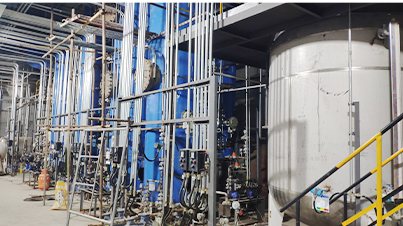Polyacrylamide Applications and Properties in Chemical and Biological Research
PAM Polyacrylamide Properties, Applications, and Benefits
Polyacrylamide (PAM) is a versatile polymer primarily used in various industrial processes due to its unique physical and chemical properties. It is a water-soluble polymer that is synthesized by the polymerization of acrylamide monomers. Depending on its formulation, PAM can exist in different forms, including non-ionic, anionic, and cationic varieties, each tailored for specific applications. This article explores the properties, applications, and benefits of PAM in various industries.
Properties of PAM
PAM exhibits several distinctive properties that enhance its usability across multiple sectors. It has excellent water retention capabilities, high viscosity, and a substantial capacity for flocculation. This means that PAM can aggregate fine particulate matter, promoting sedimentation in aqueous environments. Additionally, its non-toxic nature makes it a preferred choice in applications involving drinking water and food processing.
The molecular weight of PAM can vary considerably, affecting its performance characteristics. Lower molecular weight PAM is more effective in applications requiring rapid dissolution and immediate action, while higher molecular weight PAM is better suited for processes that require enhanced thickening or gel formation.
Applications of PAM
1. Water Treatment One of the most significant applications of PAM is in water treatment processes. PAM is widely used as a flocculant to enhance the removal of suspended solids from wastewater. By aiding in the aggregation of particles, PAM improves the efficiency of sedimentation and filtration processes, leading to clearer effluent and reduced chemical usage.
2. Agriculture In agriculture, PAM is utilized to improve soil structure and water retention. Farmers apply PAM to minimize soil erosion and enhance water infiltration in arid regions. Its ability to bind soil particles helps maintain soil integrity, which is especially critical in areas prone to desertification.
3. Oil Recovery PAM plays a crucial role in the oil industry, particularly in enhanced oil recovery techniques. By increasing the viscosity of water injected into oil reservoirs, PAM helps improve the displacement of crude oil, thereby increasing extraction efficiency. This is vital for maximizing oil recovery from existing fields.
pam polyacrylamide

4. Mining and Mineral Processing In the mining industry, PAM is used to facilitate the separation of minerals from ore. Its flocculating properties aid in the settlement of particulate matter during the processing of minerals, resulting in higher recovery rates and purer outputs.
5. Paper Production PAM is also utilized in the paper industry as a retention aid and a thickener. It assists in improving fiber retention on the paper machine, leading to enhanced production efficiency and improved paper quality.
Benefits of PAM
The use of PAM in various industries comes with numerous benefits
- Environmental Friendliness PAM is non-toxic and biodegradable, making it an environmentally friendly alternative compared to traditional chemicals used in industrial processes.
- Cost-Effectiveness By improving process efficiencies, PAM can lead to significant cost savings in operations such as water treatment and oil recovery. Its ability to enhance the performance of existing processes means that industries can achieve better results without necessarily increasing their resource input.
- Versatility The adaptability of PAM to different formulations allows it to meet the specific needs of diverse applications, making it an invaluable tool in industrial settings.
In conclusion, PAM polyacrylamide is a critical component in various industrial applications due to its unique properties and versatility. As industries continue to seek more efficient and environmentally sustainable solutions, PAM's role is likely to expand, solidifying its status as a key polymer in modern industrial processes.
-
Pbtc Scale InhibitorPBTC: A Scale Protector for Industrial Water TreatmentNewsAug.05,2025
-
Organic Phosphonate: An Efficient Defender in the Field of Scale InhibitionNewsAug.05,2025
-
Hydrolyzed Polymaleic Anhydride: Green Pioneer in Scale Inhibition FieldNewsAug.05,2025
-
PAPEMP Polyamino Polyether Methylene Phosphonic Acid For SaleNewsAug.05,2025
-
Flocculant Water Treatment: A Pioneer in Purification in the Field of Water TreatmentNewsAug.05,2025
-
Benzyl Isothiazolinone: An Efficient and Broad-Spectrum Antibacterial Protective GuardNewsAug.05,2025





